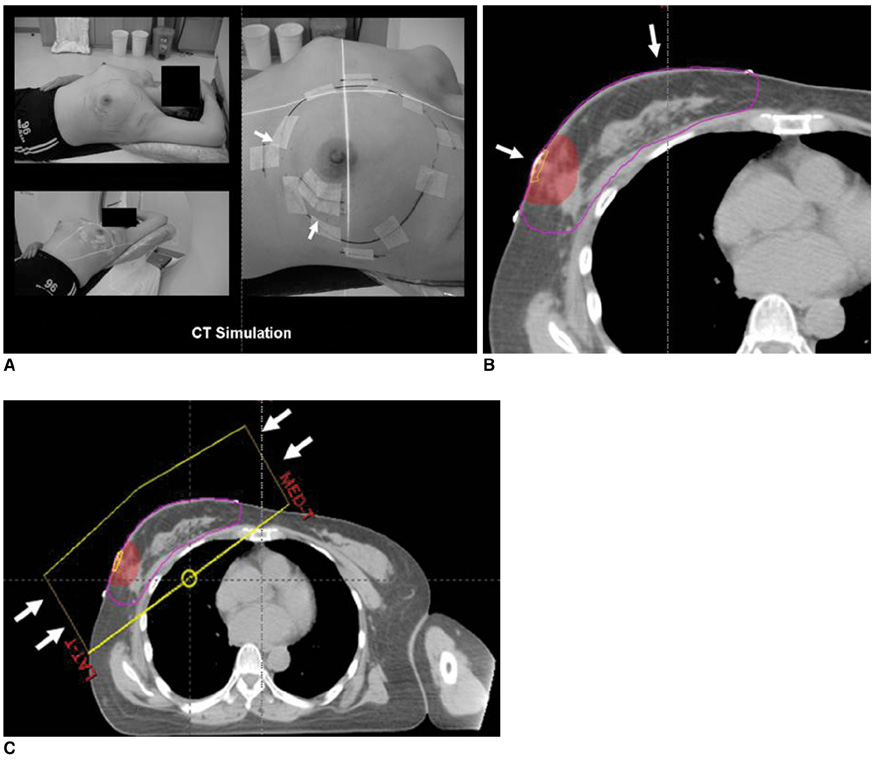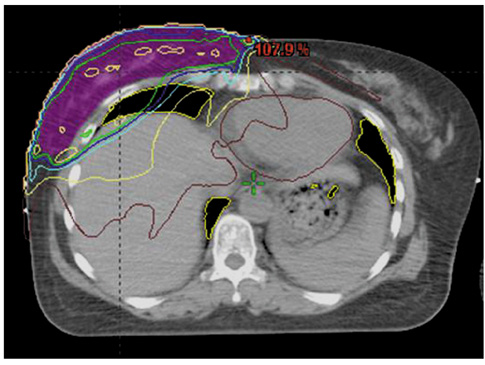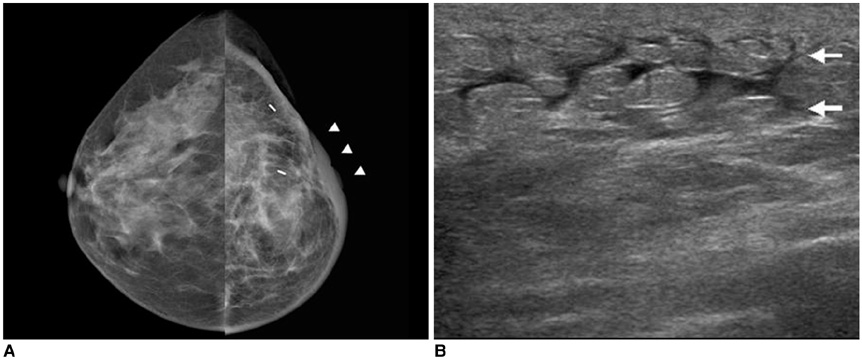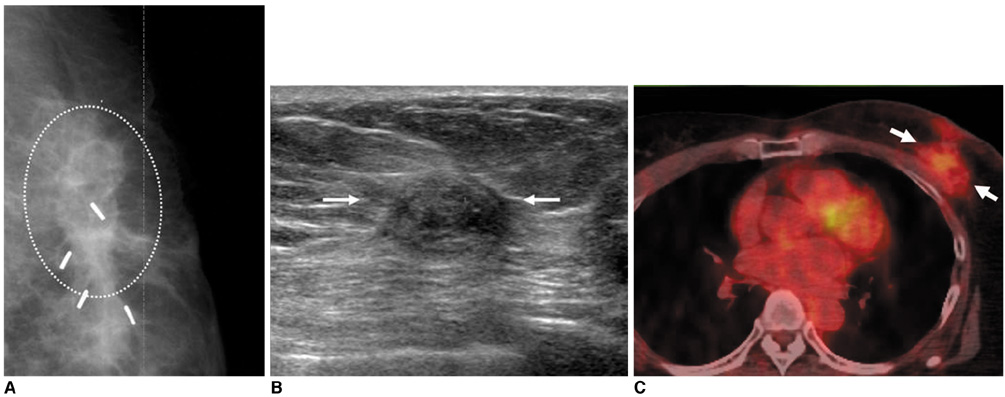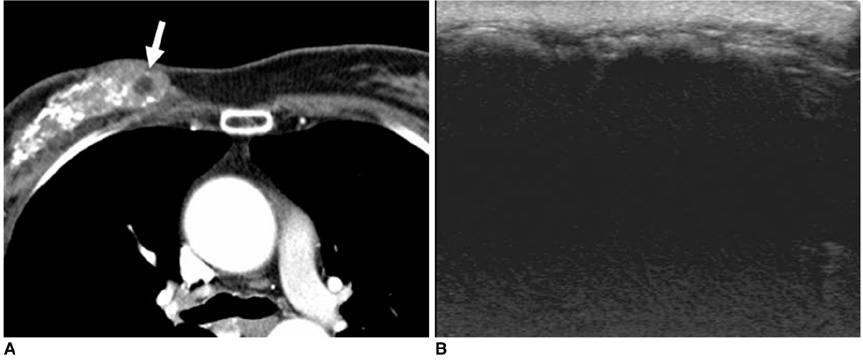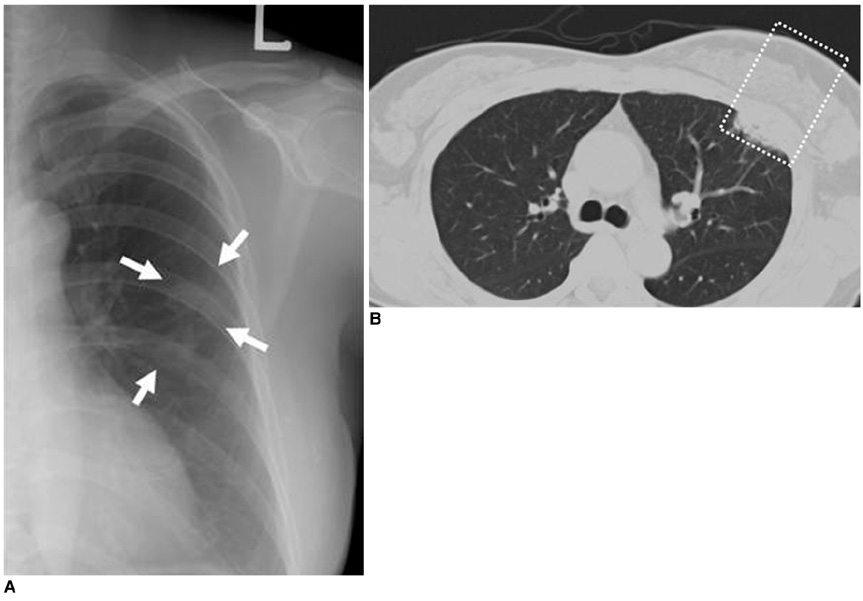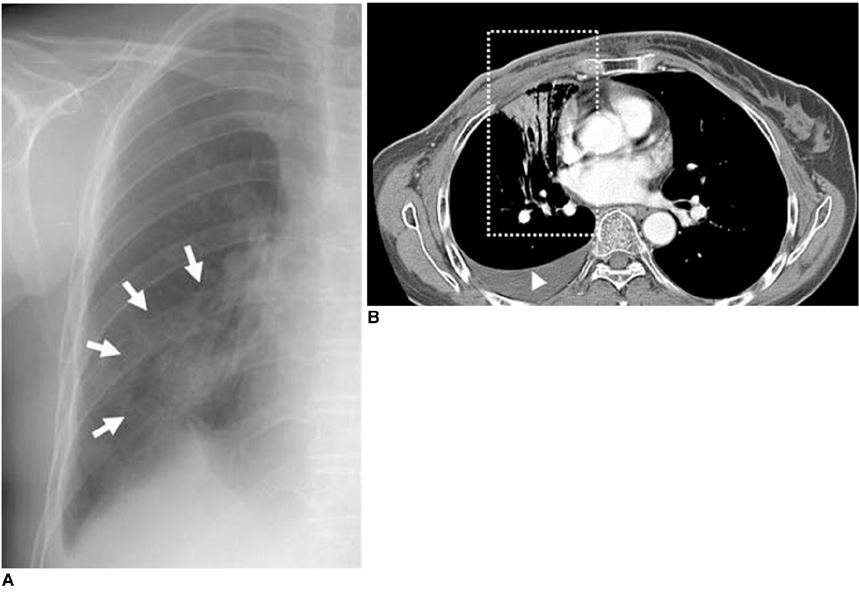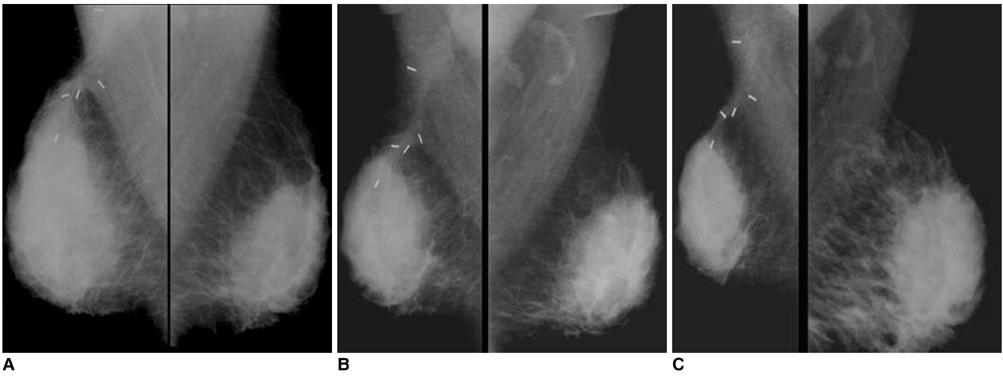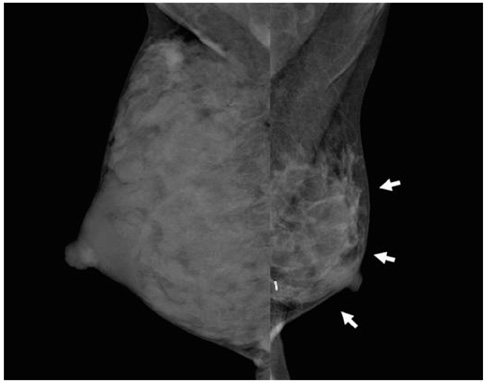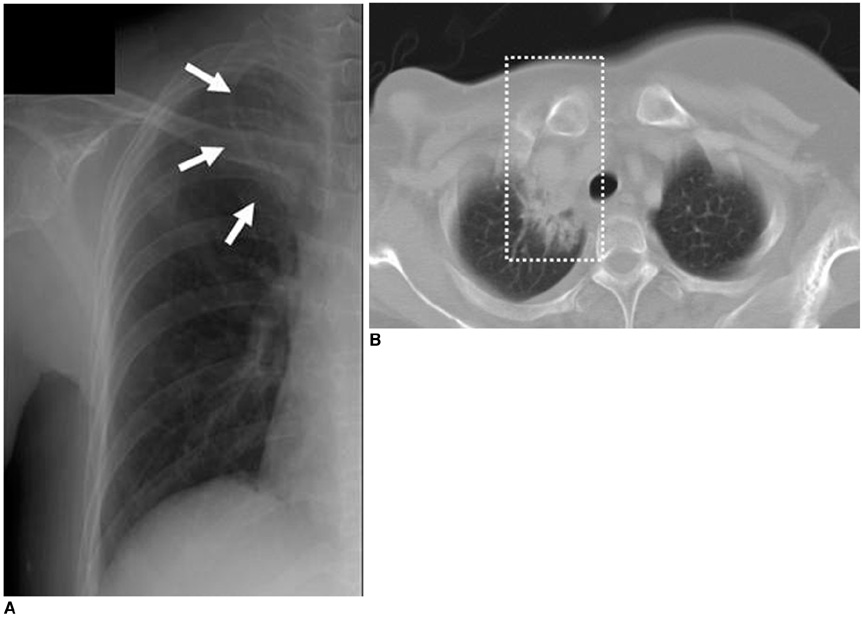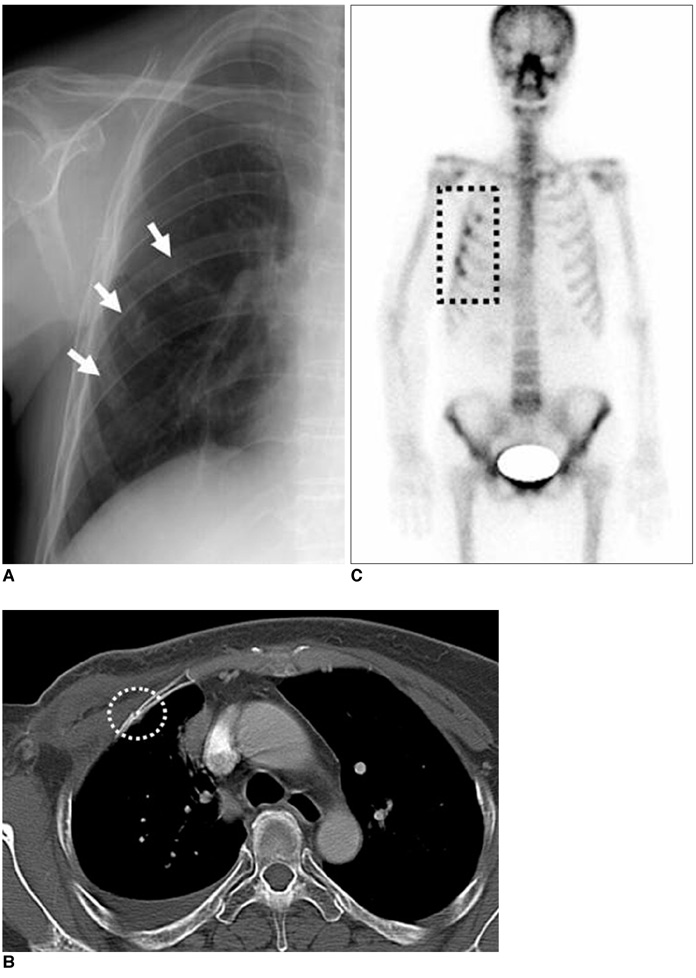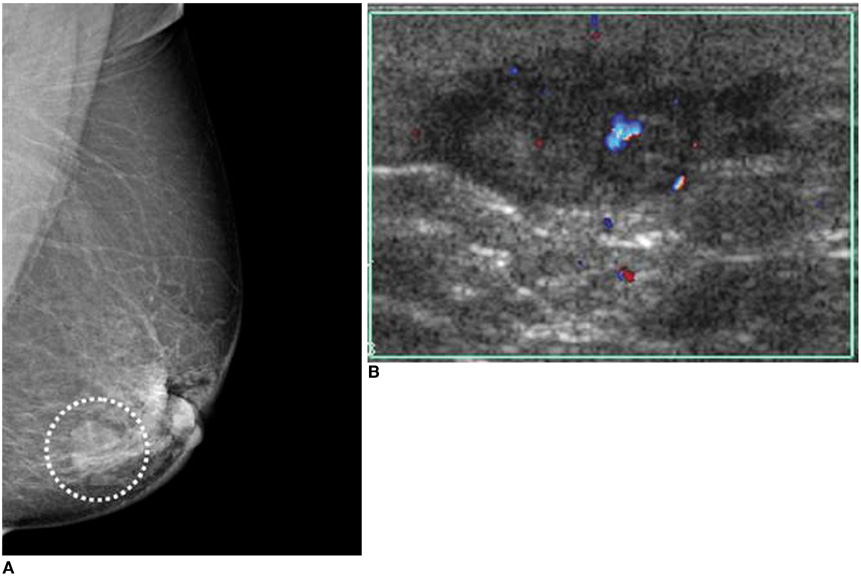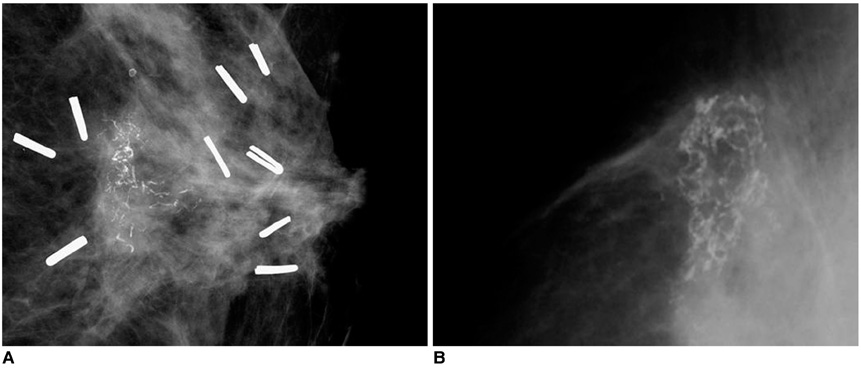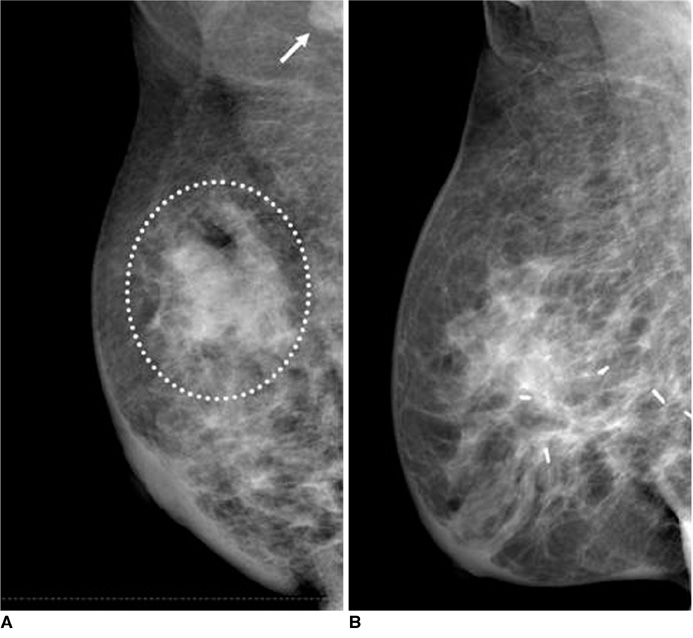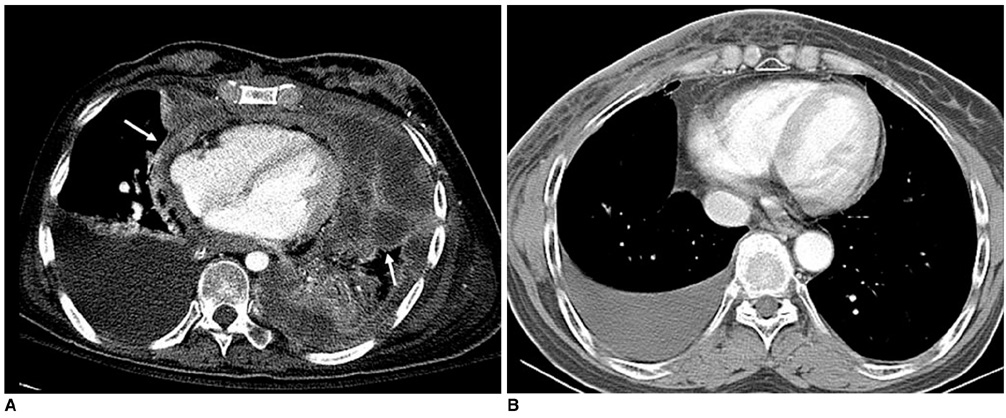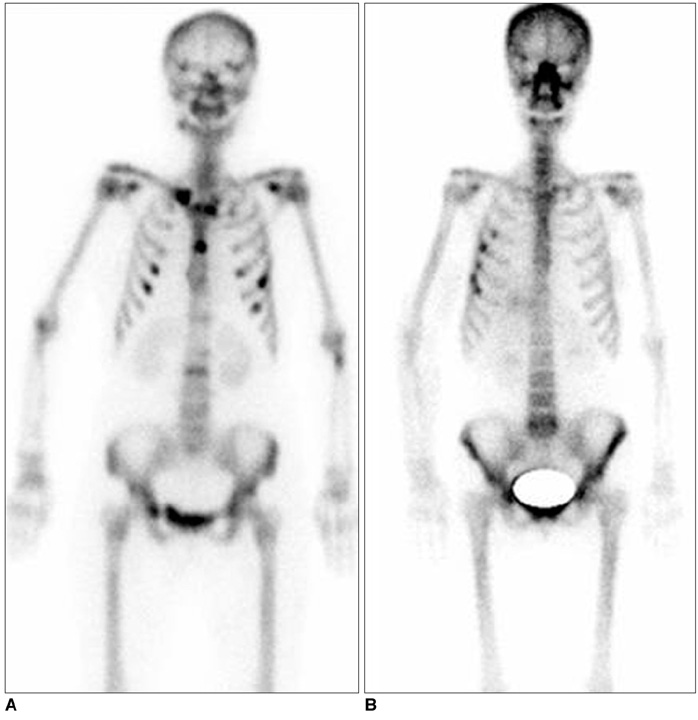Korean J Radiol.
2009 Oct;10(5):496-507. 10.3348/kjr.2009.10.5.496.
Radiation-Induced Complications after Breast Cancer Radiation Therapy: a Pictorial Review of Multimodality Imaging Findings
- Affiliations
-
- 1Department of Radiology and Research Institute of Radiology, University of Ulsan College of Medicine, Asan Medical Center, Seoul 138-736, Korea. hhkim@amc.seoul.kr
- 2Department of Diagnostic Radiology, Korea University School of Medicine, Kyungki-do 425-707, Korea.
- 3Department of Radiation Oncology, University of Ulsan College of Medicine, Asan Medical Center, Seoul 138-736, Korea.
- KMID: 1093965
- DOI: http://doi.org/10.3348/kjr.2009.10.5.496
Abstract
- The purpose of this pictorial essay is to illustrate the multimodality imaging findings of a wide spectrum of radiation-induced complications of breast cancer in the sequence of occurrence. We have classified radiation-induced complications into three groups based on the time sequence of occurrence. Knowledge of these findings will allow for the early detection of complications as well as the ability to differentiate tumor recurrence.
Keyword
MeSH Terms
Figure
Cited by 2 articles
-
Osteoradionecrosis of the Anterior Thoracic Wall after Radiation Therapy for Breast Cancer
Young Seon Kim, Jung-Hee Yoon
J Korean Soc Radiol. 2019;80(5):1003-1007. doi: 10.3348/jksr.2019.80.5.1003.Ultrasonographic Findings of Post-Operative Changes after Breast Cancer Surgery
Byeongju Kang, Ho Yong Park, Jin Hyang Jung, Wan Wook Kim, Jin Ho Chung, Jeeyeon Lee
J Surg Ultrasound. 2021;8(2):32-36. doi: 10.46268/jsu.2021.8.2.32.
Reference
-
1. Sabin BM, Eric AS, Marsha DM, Thomas AB. Levitt SH, Purdy JA, Perez CA, Vijayakumar S, editors. Breast cancer. Technical basis of radiation therapy: practical clinical applications. 2006. 4th ed. Berlin: Baert AL;486–510.2. Coles CE, Moody AM, Wilson CB, Burnet NG. Reduction of radiotherapy-induced late complications in early breast cancer: the role of intensity-modulated radiation therapy and partial breast irradiation. Part I--normal tissue complications. Clin Oncol (R Coll Radiol). 2005. 17:16–24.3. Moore AH, Olschowka JA, Williams JP, Paige SL, O'Banion MK. Radiation-induced edema is dependent on cyclooxygenase 2 activity in mouse brain. Radiat Res. 2004. 161:153–160.4. Iwasaki H, Morimoto K, Koh M, Okamura T, Wakasa K, Wakasa T, et al. A case of fat necrosis after breast quadrantectomy in which preoperative diagnosis was enabled by MRI with fat suppression technique. Magn Reson Imaging. 2004. 22:285–290.5. Lind P. Clinical relevance of pulmonary toxicity in adjuvant breast cancer irradiation. Acta Oncol. 2006. 54:13–15.6. Nishioka A, Ogawa Y, Hamada N, Terashima M, Inomata T, Yoshida S. Analysis of radiation pneumonitis and radiation-induced lung fibrosis in breast cancer patients after breast conservation treatment. Oncol Rep. 1999. 6:513–517.7. Toledano A, Garaud P, Serin D, Fourquet A, Bosset JF, Breteau N, et al. Concurrent administration of adjuvant chemotherapy and radiotherapy after breast-conserving surgery enhances late toxicities: long-term results of the ARCOSEIN multicenter randomized study. Int J Radiat Oncol Biol Phys. 2006. 65:324–332.8. Robertson JM, Clarke DH, Pevzner MM, Matter RC. Breast conservation therapy. Severe breast fibrosis after radiation therapy in patients with collagen vascular disease. Cancer. 1991. 68:502–508.9. Hardman PD, Tweeddale PM, Kerr GR, Anderson ED, Rodger A. The effect of pulmonary function of local and loco-regional irradiation for breast cancer. Radiother Oncol. 1994. 30:33–42.10. Ruggiero S, Gralow J, Marx RE, Hoff AO, Schubert MM, Huryn JM, et al. Practical guidelines for the prevention, diagnosis, and treatment of osteonecrosis of the jaw in patients with cancer. J Oncol Pract. 2006. 2:7–14.11. Buatti JM, Harari PM, Leigh BR, Cassady JR. Radiation-induced angiosarcoma of the breast. Case report and review of the literature. Am J Clin Oncol. 1994. 17:444–447.12. Cafiero F, Gipponi M, Peressini A, Queirolo P, Bertoglio S, Comandini D, et al. Radiation-associated angiosarcoma: diagnostic and therapeutic implications--two case reports and a review of the literature. Cancer. 1996. 77:2496–2502.13. Rebner M, Pennes DR, Adler DD, Helvie MA, Lichter AS. Breast microcalcifications after lumpectomy and radiation therapy. Radiology. 1989. 170:691–693.
- Full Text Links
- Actions
-
Cited
- CITED
-
- Close
- Share
- Similar articles
-
- Ultrasound Findings After Breast Cancer Radiation Therapy: Cutaneous, Pleural, Pulmonary, and Cardiac Changes
- A case of radiation-induced sternal osteosarcoma after treatment of breast cancer
- Post Radiation Myxofibrosarcoma in Breast: A Case Report
- Video Fluoroscopic Swallowing Study of Radiation Induced Dysphagia in Head and Neck Cancer
- Imaging Spectrum of Augmented Breast and Post-Mastectomy Reconstructed Breast with Common Complications: A Pictorial Essay

